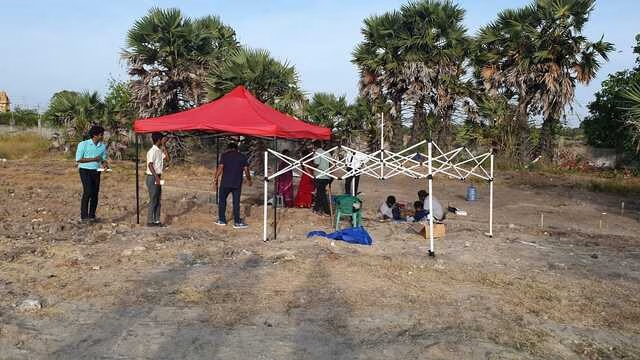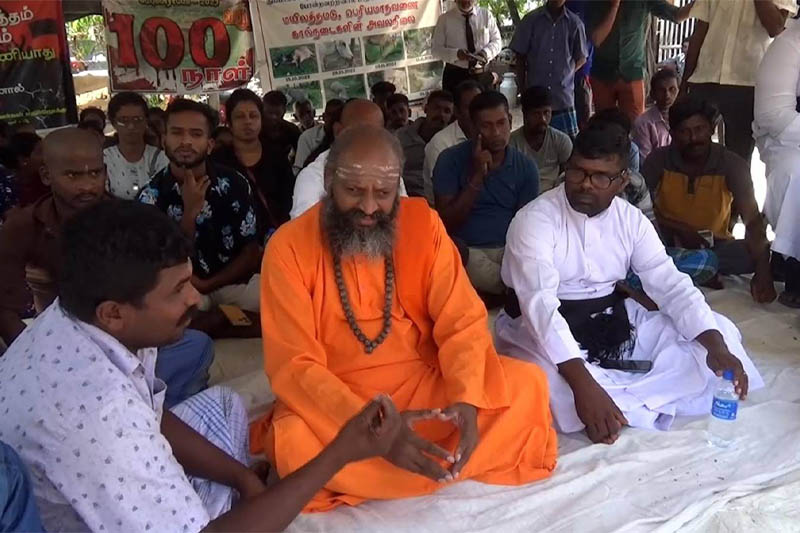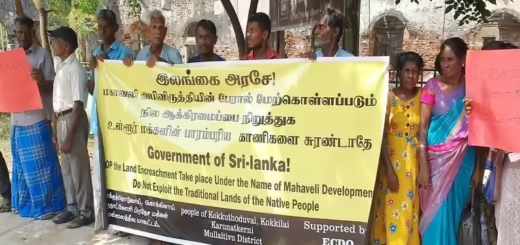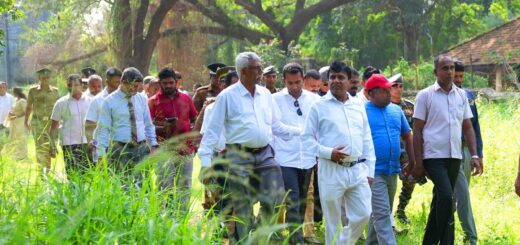Three excavation sites identified in Chemmani mass grave complex

Investigators at the most recently discovered mass grave complex in Sri Lanka’s war torn north have unearthed 56 bodies making the ill-fated site the fourth largest mass burial ground in the country.
Excavations at the Siththupaththi Hindu cemetery in Chemmani started in mid-May following the accidental discovery of skeletal remains in February.
On Tuesday (08), the 56th skeleton was identified. 50 of them including those of less than 10 months old children have been painstakingly recovered by a team led by forensic archaeologist Prof. Raj Somadeva and Judicial Medical Officer Dr Selliah Pranavan. The remains were unearthed from three locations described as Forensic Excavation Sites.
“Three human remains identified at the second Forensic Excavation Site are yet to be exhumed. They will be marked for excavation tomorrow, ” said Ranitha Gnanarajah, a lawyer at the crime scene who has specialised training on forensic anthropology and forensic archaeology.
Twenty meters from Excavation Site 1 measuring 11 metres in length and breadth, a third forensic excavation site had been established after human remains were found while digging a trench to drain possible rainwater.
“This gives an idea of the vast area the bodies are dispersed,” said human rights lawyer K. S. Ratnavale, following his observation of the mass grave complex.
The two lawyers have been representing Tamil families of victims who fear that their loved ones – who either surrendered to the Sri Lanka military at the end of the war or were abducted in its aftermath – could be among the unceremoniously buried in mass graves scattered throughout the north and east.
Even though no government has initiated probes to unearth the truth, accidental discoveries have driven investigations at four sites in the north in addition to two in the south.
Two, including the largest to date, are in Mannar. The Sathosa mass grave in Mannar first identified in 2018 contained 376 bodies including 28 children when the excavation work was halted in 2014.
Sri Lanka’s Northern Provincial High Court has ruled to keep the Sathosa mass grave in Mannar open until a final decision is made after studying the findings of forensic and archaeological experts.
In 2013, construction workers stumbled upon skeletal remains close to the government hospital in the central town of Matale. 155 bodies were recovered. However, US laboratory Beta Analytics in Miami, Florida carbon dated six bone samples as more than five centuries old. That conclusion is heavily contested by forensic archaeologist Somadeva who is convinced that they belong to the late 80s.
Thiuketheeswaram mass grave in Mannar was also discovered in December 2013 – once again by construction workers. When the excavation work was halted abruptly in 2016, the number of bodies unearthed were 82.
Up to now, Kokkuthoduvai in Mullaitivu was regarded as the mass grave with the fourth largest number of skeletons.
When the work concluded a year ago, investigators had unearthed 52 bodies.
Forensic archaeologists believe the bodies exhumed from the Kokkuthoduvai mass grave in war-torn Vanni are of Tamil Tiger combatants who have been unceremoniously buried between 1994 and 1996.
In Colombo’s main port premises, human bones were first found in July 2024. The number of skeletons unearthed in ongoing excavations have not been made clear by investigators.
These hundreds of bodies are yet to be conclusively identified.









